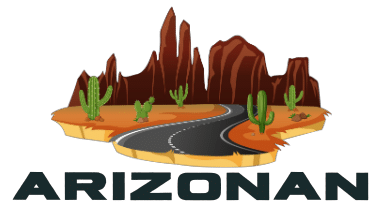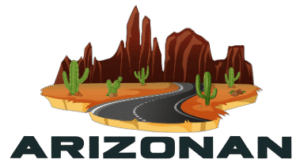Wickenburg, Arizona
Introduction
With a population of around 7,000 people, Wickenburg is a vibrant community known for its Western charm and hospitality. The town is located approximately 54 miles northwest of downtown Phoenix, offering residents a quiet, small-town atmosphere within easy reach of a major city.
Thank you for reading this post, don't forget to subscribe!Founded in 1863, Wickenburg has a rich history tied to ranching, gold mining, and the railroad. The town’s historic downtown district showcases this history, with well-preserved historic buildings and informative plaques.
Wickenburg is served by US Route 60 and State Route 93. The Valley Metro transit system provides public transportation to the greater Phoenix area.
Wickenburg’s economy is primarily based on healthcare, education, retail, and tourism. The town is home to several large employers, including the Wickenburg Community Hospital and the Wickenburg Unified School District.
The Wickenburg Unified School District serves the town with an elementary school, a middle school, and Wickenburg High School. There are also private educational opportunities, such as the Wickenburg Christian Academy.
The Wickenburg Community Hospital provides medical services to the town and surrounding areas. The town also has several medical clinics and specialty healthcare facilities.
Wickenburg offers a range of real estate options, from single-family homes to ranch properties. The town is also home to several retirement communities and assisted living facilities, like the Wickenburg Ranch, making it an attractive place for retirees.
Points of Interest
Points of interest in Wickenburg include the Vulture Mine, Wickenburg’s historic downtown district, the Desert Caballeros Western Museum, and the Hassayampa River Preserve. The town’s numerous dude ranches, like the Rancho de los Caballeros and the Flying E Ranch, also attract visitors.
Things to Do
In addition to exploring the town’s museums and historic sites, visitors can enjoy outdoor activities like hiking, horseback riding, and bird watching. The town hosts various events throughout the year, such as the Gold Rush Days and the Bluegrass Festival. Shopping in the town’s unique boutiques and dining in its restaurants are other popular activities.
Elementary Schools, Private Schools, and School Districts
Wickenburg Unified School District operates two elementary schools: Hassayampa Elementary School and Wickenburg Christian Academy, a private school, also serves the community. The district is known for its commitment to providing a supportive and engaging learning environment.
Economy
Wickenburg’s economy is primarily driven by healthcare, education, tourism, and retail trade. The town’s rich Western heritage and its numerous events and festivals attract tourists, boosting the local economy.
For additional information on Wickenburg’s services and attractions, visit the town’s official website at https://www.wickenburgaz.org/.
Real Estate
The Wickenburg real estate market offers a mix of single-family homes, townhomes, and ranch properties. Housing options cater to various budgets and lifestyles, from historic homes in the downtown area to newer developments in master-planned communities. The median home price in Wickenburg is around $300,000, but values can range significantly based on location, size, and amenities.
Adult and Continuing Education
Wickenburg residents have access to adult and continuing education opportunities through community organizations and nearby institutions. The Wickenburg Art Club offers art classes for adults, while the Wickenburg Public Library hosts various workshops and educational events. Additionally, nearby colleges and universities, such as the Arizona State University West Campus and Glendale Community College, offer degree programs and continuing education courses.
Dining and Nightlife
Wickenburg offers a variety of dining options, ranging from casual cafes to fine dining establishments. Local favorites include Nana’s Sandwich Saloon, which serves homemade sandwiches and soups, and the Horseshoe Cafe, known for its hearty breakfasts. For a taste of Mexican cuisine, try Anita’s Cocina. The town’s nightlife scene is centered around its Western roots, with establishments like the Mecca Bar & Lounge and the Saddle Sore Bar offering live music, dancing, and a good time.
Off-road Trips and Horseback Riding
Wickenburg’s beautiful desert landscape provides numerous off-road adventures for those who enjoy exploring the great outdoors. Box Canyon, the Vulture Mountains Recreation Area, and the Hassayampa River Canyon Wilderness are popular destinations for off-roading enthusiasts.
Horseback riding is a popular activity in Wickenburg, with several ranches and stables offering guided trail rides. Rancho de los Caballeros and Flying E Ranch provide authentic Western experiences, allowing visitors to explore the surrounding desert on horseback.
Hiking and Scenic Drives
Wickenburg’s natural beauty provides an abundance of hiking opportunities. The Vulture Peak Trail, the Hassayampa River Preserve, and the Box Canyon Trail are popular among locals and visitors alike. The scenic drive along the Joshua Forest Parkway showcases the region’s unique flora, such as the iconic Joshua tree.
Art and Culture
Art and culture play a significant role in Wickenburg’s community. The Desert Caballeros Western Museum features exhibits on Western art, while the Wickenburg Art Club hosts art shows and workshops. Various public art installations, such as the sculptures found in Stone Park, add to the town’s cultural landscape.
Events and Festivals
Wickenburg hosts several events and festivals throughout the year that celebrate its Western heritage and vibrant community. Gold Rush Days in February features a parade, rodeo, and various activities. The Bluegrass Festival in November showcases top bluegrass musicians and offers workshops for aspiring musicians. The annual Fiesta de Septiembre celebrates Hispanic heritage with music, dance, and food.
For more information on Wickenburg’s services and attractions, visit the town’s official website at https://www.wickenburgaz.org/.
Parks and Playgrounds
Wickenburg boasts a variety of parks and playgrounds that cater to families and outdoor enthusiasts. Sunset Park, Wickenburg’s largest park, offers sports courts, a skate park, playgrounds, and picnic areas. Stone Park features a beautiful water feature, shaded seating areas, and a playground. Coffinger Park, located near the Hassayampa River, has a playground, sports fields, and a swimming pool.
Government Structure and Services
Wickenburg operates under a council-manager form of government. The Town Council, composed of the Mayor and six council members, sets policies and priorities, while the Town Manager oversees daily operations and implements the council’s decisions. The town provides a variety of services to its residents, including public safety, community development, public works, and parks and recreation.
Police Department
The Wickenburg Police Department is responsible for ensuring the safety and security of the town’s residents and visitors. It is committed to community-oriented policing and maintaining strong partnerships with the community. To learn more about the Wickenburg Police Department, visit their website at https://www.wickenburgaz.org/288/Police.
Fire Department
The Wickenburg Fire Department provides fire protection, emergency medical services, and rescue services to the community. It is dedicated to public safety and community education, offering programs such as CPR training and fire safety presentations. For more information about the Wickenburg Fire Department, visit their website at https://www.wickenburgaz.org/256/Fire.
Transportation
Transportation options in Wickenburg include private vehicle travel, limited public transportation, and taxi services. The Wickenburg Connector, operated by Valley Metro, offers a shuttle service connecting Wickenburg to the Surprise Park-and-Ride, where passengers can access regional buses. Additionally, Wickenburg Taxi provides local transportation services.
Outdoor Activities and Sports
Wickenburg’s outdoor recreation opportunities extend beyond hiking and horseback riding. The town features sports facilities such as the Everett Bowman Rodeo Arena, the Wickenburg Community Center, and the Wickenburg Sports Complex. Residents and visitors can participate in activities like tennis, pickleball, basketball, and softball.
Cultural Centers
Wickenburg’s cultural centers contribute to the town’s vibrant arts scene and celebrate its unique heritage. The Del E. Webb Center for the Performing Arts hosts a variety of performances, including theater, dance, and music events. The Wickenburg Community Center, in addition to hosting sporting events, also serves as a venue for community gatherings and cultural activities.
For more information on Wickenburg’s services and attractions, visit the town’s official website at https://www.wickenburgaz.org/.
Wickenburg, Arizona, is a historic Western town with a rich heritage and vibrant community. It offers a range of attractions, including the Vulture Mine, Desert Caballeros Western Museum, and numerous dude ranches. The town’s natural beauty provides ample opportunities for outdoor activities such as hiking, horseback riding, and off-roading.
Wickenburg boasts a variety of parks, playgrounds, and sports facilities, as well as cultural centers and events that celebrate its unique heritage. The local economy is supported by healthcare, education, tourism, and retail trade, with housing options catering to different budgets and lifestyles.
The town operates under a council-manager form of government and provides various services, such as public safety, community development, and parks and recreation. Transportation options include private vehicles, limited public transportation, and taxi services.
For more information on Wickenburg’s services and attractions, visit the town’s official website at https://www.wickenburgaz.org/.

